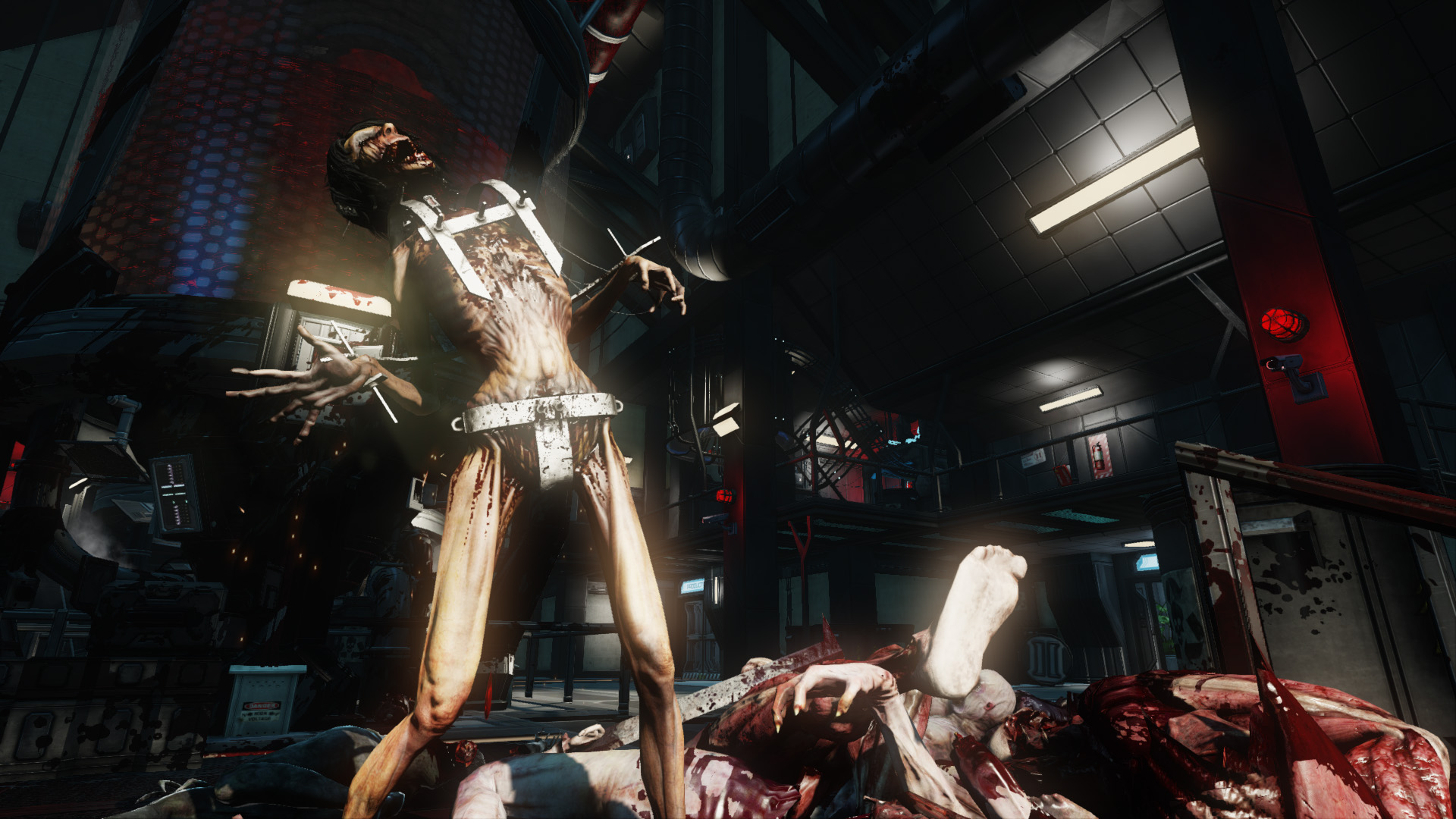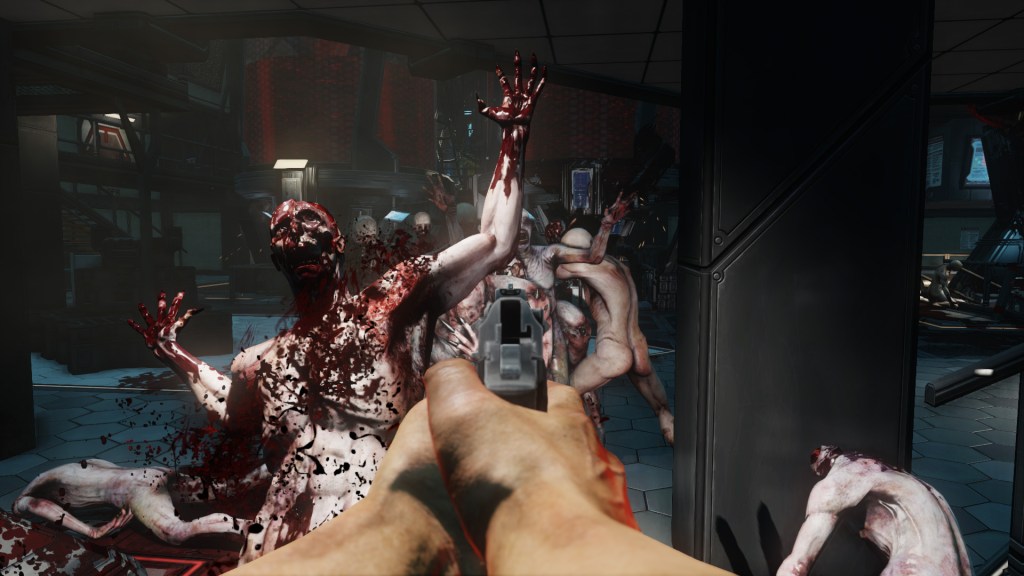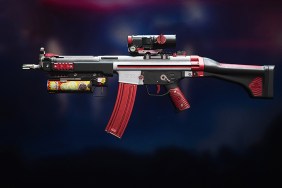You never have to see the same explosion of carnage twice.
At a recent preview event in San Francisco, the room was an odd mix of game and gore-hound journalists, which sounds about right for Tripwire’s Killing Floor 2. Killing Floor is a wave-based co-operative shooter that started out as a mod for Unreal 2004 before Tripwire bought it and developed it for release in 2009. Since then, they’ve been regularly releasing content updates that lead directly into Killing Floor 2, which takes place a month after the events of the latest DLC for the original game.
Killing Floor 2 is an old-school FPS mix of standing your ground and mowing down waves of enemies, and backpedaling while blasting the entire time as the swarm gradually becomes overwhelming. Having been unable to contain the infestation of Zeds, Killing Floor’s genetically engineered monsters, the protagonists have crossed from England into Europe. One of the first maps we were shown was Paris, a mix of Subway tunnels, building hallways, and narrow streets with a few open city squares. The Zeds are relentless in their attacks, and the game is a constant onslaught of Clots (basic grunts) mixed with harder occasional enemy types. There are simply too many enemies, in the single-player mode they showed us, minus the six-player co-op, to remain in one place.
Tripwire outlined three pillars of the game: Bullets, Blood, and Blades. Bullets refers to the gun-shooting combat, and they’ve gone to great lengths to increase the fidelity of the experience. They hired a combat specialist to perform standard and combat reloads of the projectile weapons to give the gun mechanics a layer of authenticity.
Blades refers to Killing Floor 2’s new melee system. The developers wanted the game to be as fun as possible without guns, so in the demo, they showed off the classic katana. The melee system was especially intuitive in terms of control, with both quick and power attacks that cleaved many of the Clots to bits. Countering an enemy like a Gorefast, Zeds with giant blades grafted onto their arms, and then closing in for a kill while they’re momentarily disoriented is viscerally gratifying.
The most important pillar of the game to Tripwire is Blood, and the reason for the Horror press showing up. Merely the world "blood" is putting it a little lightly, as the gore system is something Tripwire is particularly proud of, what they call the most comprehensive ever created for a video game, and they call it M.E.A.T. (Massive Evisceration And Trauma).
The MEAT system allows them to separate enemies into 19 different dismember-able body parts. With the AI turned off, they downed a Clot, and then showed us the progressive destruction of the head. A few shots would blast the skin away from the skull, before causing it to explode. Then with further attacks you could see individual sections of the brain before the whole thing disappeared. It also featured persistent blood that wouldn’t disappear from the level, for which the devs had worked hard to keep from having any effect on performance.
This attention to detail extends to the death animations, for which there’s a baseline of at least 90 different potential death animations (and 300 animations per enemy in general), that when combined with ragdoll physics mean never seeing the same enemy death twice. One of the developers cited with glee, that the other week, after seeing thousands of deaths, he was elated to watch a Clot explode towards him from a grenade explosion in a way that was totally new.
The difficulty levels on Killing Floor 2 are progressive in a different way from other games. Rather than making the enemies more damage-resistant, instead they get newer, stronger, and more persistent attacks. They will always take the same amount of damage to kill, but they become significantly more deadly the greater the difficulty.

Killing Floor wears its influences on its sleeve. Art Director David Hensley mentioned that the new Siren enemy design is a direct visual reference to the French horror film Martyrs (2008), and the series has always aimed for an Evil Dead comedy aesthetic. This is a game for gorehounds by gorehounds.
Apart from the awesome, exploding severed body parts, my favorite thing about the demo was the game’s soft story. While Killing Floor 2 has an explicit background story, it pays attention to deatils in background elements in areas like the Biotics lab: a break room where someone has recently had a birthday party, or a room where human body parts are harvested by the Zeds before being fed into a tank with a gross mother-blob that makes the Clots. The incredible attention to detail allowed for the story to be told wordlessly (provided you weren’t overrun by body-part-harvesting Zeds).
Tripwire is also incredibly dedicated to their mod community. Killing Floor 2 has been built on the Unreal 3 Engine, which is optimized for consoles in how it handles compiling its builds, making it difficult to mod. To that end, Tripwire has actually worked to make their code easier to mod, so that fans can create the exact experiences they want.
The bottom line for Killing Floor 2 for Creative Director Bill Monk is how much fun it is. “With Red Orchestra we’re all about realism,” he said, “but Killing Floor is all about ‘cool-ism.’ That may be cheesy to say, but we’re dedicated to doing what’s cool.” It shows. Killing Floor 2 looks like a wild, ridiculous ride, dedicated to giving fans as much blood and gore as they can handle. Killing Floor 2 does not have a set release date, yet, but we'll be sure to update you as soon as that information is released!







